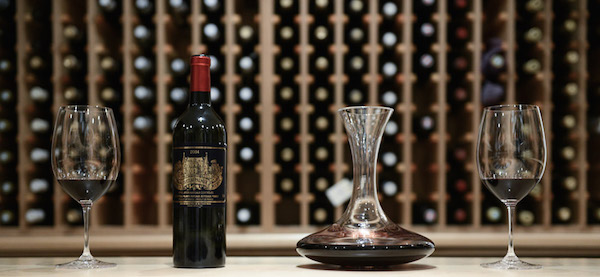by Wine Owners
Posted on 2016-10-24
Market context and performance since June 24th
Serving as a general fine wine market tracker, the WO 150 gained 6% in the year to June (6.5% in the previous 12 months) but is now up 19.8% YTD.
Focusing on the all-important Bordeaux market, the world’s single largest region of fine wine production, the WO First Growth Index was up 8.7% year to date on 24th June, but is now up 23%.
As regards Bordeaux Firsts, this performance is on the back of 4 years of decline, following the bursting of a Chinese-inspired bubble in late 2011. The market in these blue chip Bordeaux bottomed in Q3 of 2015, and has soared since. Chateau Latour, released at £11,400 per case of 12 bottles, is now back within £100 per bottle of that release price.
The rest of the Bordeaux market had tested its lows the previous year, and so its performance year to June 2016 was a slightly higher 10.25%, reflecting the additional momentum gathered over the previous 18 months. Looking at all classified growths, the market is now up 22.5% YTD.
Whereas Bordeaux is a market driven by liquidity and large production volumes, scarcity-driven markets such as Burgundy, Piedmont and cult Californians, have enjoyed a long-term run stretching back 20+ years, and these wine markets have not suffered the roller coaster ride of Bordeaux.
The WO Northern Italy index is up 171% over the last 10 years, the WO Blue Chip Burgundy Index is up 311% over the same period, and the WO California index is up a whopping 427%.
What’s going to be the effect on new releases?
New releases are already more expensive to buy due to the pound buying less euros or dollars.
Brexit will cause new releases of two sought after vintages (Burgundy 2015 and Bordeaux 2016) to rise by 30%+, caused by producer increases of, say, around 10% compounded by the 20% effect of devaluation.
First in line: the impending 2015 Burgundies are due for UK release as futures in January 2017. With a compromised 2016 vintage assuring small production volumes, 2015s from some addresses will rocket to compensate for next years’ lower production.
Bordeaux will follow in April 2017.
Given the UK’s preeminent role in global fine wine trading, Brexit has turbo-charged market performance, and given the relatively recent recovery of Bordeaux markets a boost after a prolonged period of decline.
As the pound falls, assuming a rising fine wine market (key as it means there's strong global demand), the price of secondary market wines will rise since they are cheaper to buy for buyers holding currencies such as HKD or dollars.
This increases the value of collectors' current stock since the market is global. London is still one of the most important global trading hubs for fine wine, if not the most important.
Could price rises kill demand?
Because top burgundy from the best producers can double after first release it is unlikely to dampen initial demand – by much. And if it does there’s always the USA, Japan and other markets that’ll mop up the relatively small volumes.
Secondary market prices of older vintages may rise, pulled up by the higher new release prices. But as they rise, the number of potential secondary market buyers may decrease, causing these scarcity driven markets to become less liquid. As a result, it may take longer to sell your wines at these higher prices. The moral of the story is that scarcity driven markets are not for the impatient seller who needs cash tomorrow. These are better seen as long-term holds.
Bordeaux prices of the new vintage (2016) will also rise when they are released next year. Whether the UK Market chooses to buy or sits this one out remains to be seen.
However, the USA is more or less certain to be buying these futures aided by vintage character of ripe, powerful wines from a hot summer that will suit their palates.
As a consequence, enduring weakness of the pound will place further upward pressure on back vintages.
We predict that recent back vintages will increase sooner than is normally the case (1-2 years instead of the more common 5-7 years), as top Bordeaux producers are becoming principal stockholders in an attempt to capture more of the downstream value of their wines and increase the value of their balance sheet assets.
by Wine Owners
Posted on 2016-07-21
The past few weeks have seen significant movements and activity within the fine wine market, with the closure of the En Primeur campaigns and the devaluation of sterling kicking the market 4-5% higher.
Whether this situation lasts following the surge remains to be seen, but combined with the upward movement of the market in the preceding few months, and 21 months of increasingly solid gains in the Bordeaux market, it makes for an interesting period.
We've put together our updated set of Fine Wine Predictions for the second half of 2016, including thoughts on the impact of Brexit, tips for collectors, and analysis of buying trends in the market.
We hope you enjoy reading the report, and would love to hear from you if you have any questions, are looking for specific guidance, or want to join the conversation.
GET YOUR FREE REPORT HERE


